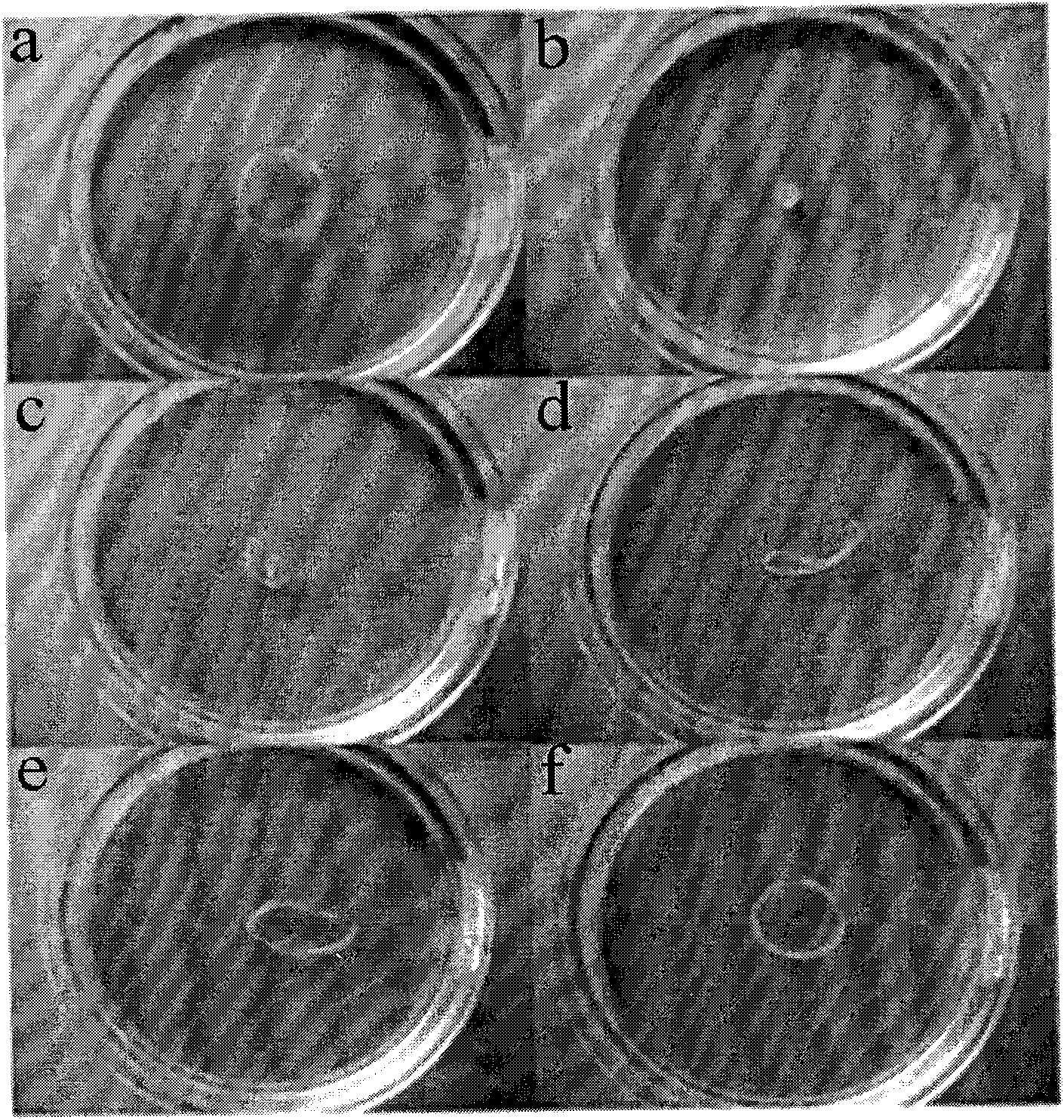Biodegradable shape-memory material based on D,L-polylactic acid and preparation method thereof
A memory material, polylactic acid technology, applied in the field of biomedical polymer materials, can solve the problems of low deformation rate, non-biodegradable, high deformation recovery temperature, etc., and achieve the effect of good biodegradability and good biocompatibility
- Summary
- Abstract
- Description
- Claims
- Application Information
AI Technical Summary
Problems solved by technology
Method used
Image
Examples
Embodiment 1
[0021] Example 1: Accurately weigh recrystallized D, L-lactide 14.4g (0.1mol), butanediol 0.887ml (0.01mol) and stannous octoate 0.0083g (2 × 10 -5 mol), mixed evenly, reacted in vacuum, and reacted at 140°C for 24 hours. The reactant was dissolved in chloroform, precipitated with ethanol, and dried in vacuum to constant weight to obtain hydroxyl-terminated D, L-polylactic acid. The molecular weight calculated by proton nuclear magnetic resonance spectrum is 1834, and the glass transition temperature T g = 14.27°C.
Embodiment 2
[0022] Embodiment 2: Accurately weigh recrystallized D, L-lactide 14.4g (0.1mol), butanediol 0.355ml (0.004mol) and stannous octoate 0.0083g (2 × 10 -5 mol), mixed evenly, reacted in vacuum, and reacted at 140°C for 24 hours. The reactant was dissolved in chloroform, precipitated with ethanol, and dried in vacuum to constant weight to obtain hydroxyl-terminated D, L-polylactic acid. The molecular weight calculated by proton nuclear magnetic resonance spectrum is 3720, and the glass transition temperature T g = 36.33°C.
Embodiment 3
[0023] Embodiment 3: Accurately weigh recrystallized D, L-lactide 14.4g (0.1mol), butanediol 0.177ml (0.002mol) and stannous octoate 0.0083g (2 × 10 -5 mol), mixed evenly, reacted in vacuum, and reacted at 140°C for 24 hours. The reactant was dissolved in chloroform, precipitated with ethanol, and dried in vacuum to constant weight to obtain hydroxyl-terminated D, L-polylactic acid. The molecular weight calculated by proton nuclear magnetic resonance spectrum is 7434, and the glass transition temperature T g = 45.02°C.
PUM
| Property | Measurement | Unit |
|---|---|---|
| glass transition temperature | aaaaa | aaaaa |
| glass transition temperature | aaaaa | aaaaa |
| glass transition temperature | aaaaa | aaaaa |
Abstract
Description
Claims
Application Information
 Login to View More
Login to View More - R&D Engineer
- R&D Manager
- IP Professional
- Industry Leading Data Capabilities
- Powerful AI technology
- Patent DNA Extraction
Browse by: Latest US Patents, China's latest patents, Technical Efficacy Thesaurus, Application Domain, Technology Topic, Popular Technical Reports.
© 2024 PatSnap. All rights reserved.Legal|Privacy policy|Modern Slavery Act Transparency Statement|Sitemap|About US| Contact US: help@patsnap.com








